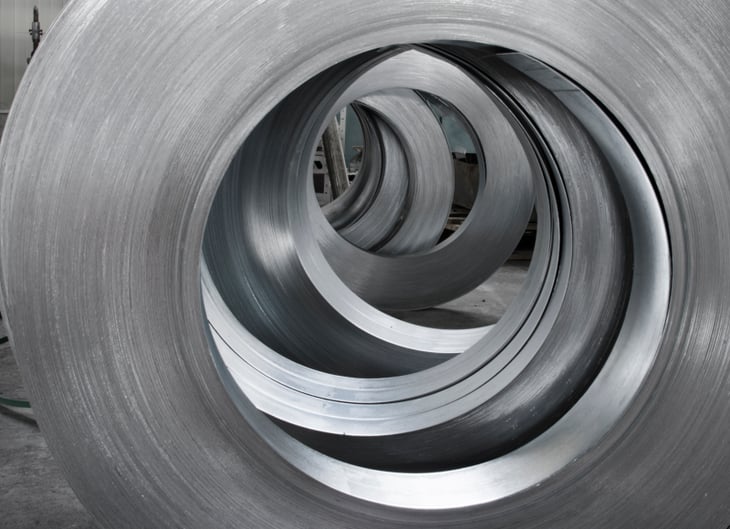
.png)
Industry Trends: Metals and Steel - are energy prices affecting the sector?
Sector Insights
Energy costs and supply issues present major downside risks for the industry
Metals and steel are among the world’s most energy intensive industries, and more vulnerable to feeling the effects of energy price rises and shocks.
In Germany, most producers have been able to pass on a large share of their energy costs to their customers. But in the UK, particularly among businesses supplying the construction industry with fixed contracts and among smaller businesses without cash reserves, rising fuel bills are squeezing profit margins. In the Czech Republic, some producers are considering lowering their output in a bid to lower expensive energy consumption and protect profitability. The same approach is now also being seen in several economies, including the Netherlands, where economists predict persistent disruption of the energy market could lead to a contraction of 2% of metal and steel sales. While oil and gas prices have sharply increased in the US, recent robust demand has enabled metals and steel businesses to pass on higher input prices.

Strong rebound from pandemic recession increases financial resilience
Although surging energy prices, rising inflation, ongoing supply chain issues and the war in Ukraine present significant challenges for the metals and steel industry, they do not present the whole story. This is because the global metals and steel output enjoyed a strong rebound from the pandemic recession during 2021, enabling many businesses to reduce debts and increase their financial resilience.
In the US, on the back of a high growth rate in 2021, metals and steel output is expected to increase by about 5% this year, driven by ongoing robust demand, mainly from residential construction, aerospace/transportation and engineering. What’s more, President Biden’s partial scaling back of the former President Trump’s Section 232 tariffs for EU aluminium and steel imports should support production and exports from Europe.
In China, increasing demand from the automotive industry is having a positive impact on the metals and steel sector. Whether this can outweigh the challenges presented by a decline in the construction industry and the costs associated with transitioning to lower carbon manufacturing, however, remains to be seen.
Global growth in sector expected to decline
Despite the translation of pent-up demand into growth during 2021 and early 202, forecasts from analysts Oxford Economics suggest global growth in the metals and steel industry will drop from 6.3% in 2021 to 1.7%% in 2022 and 1.6% in 2023. Downside risks include the war in Ukraine, especially for European producers. It is likely that a longer-lasting war in Ukraine could negatively affect the sector performance in Europe into 2023 by interrupting some raw materials supply chains and affecting high energy prices.
In addition to weighing on metals and steel production, a weakening economic performance or even recession in many countries could also impact the industry by shrinking demand from key buyer industries. Automotive, construction and engineering are cyclical sectors, strongly investment-driven and dependent on robust consumer spending. Rising inflation and aggressive monetary tightening are leading to a reduction in consumer spending and present an additional downside risk to the sector on a global level.
Overview of global metals and steel industry
An overview of the global metals and steel markets is available in the September 2022 issue of the Atradius Steel Metals Industry Trends Report. The report applies weather forecast icons to present a snapshot of the economic outlook for major markets, as well as an outline of the metals and steel industry performance in several countries including China, France, Germany, India, Italy and the USA
Download the Atradius Industry Trends: Metals & Steels report here

